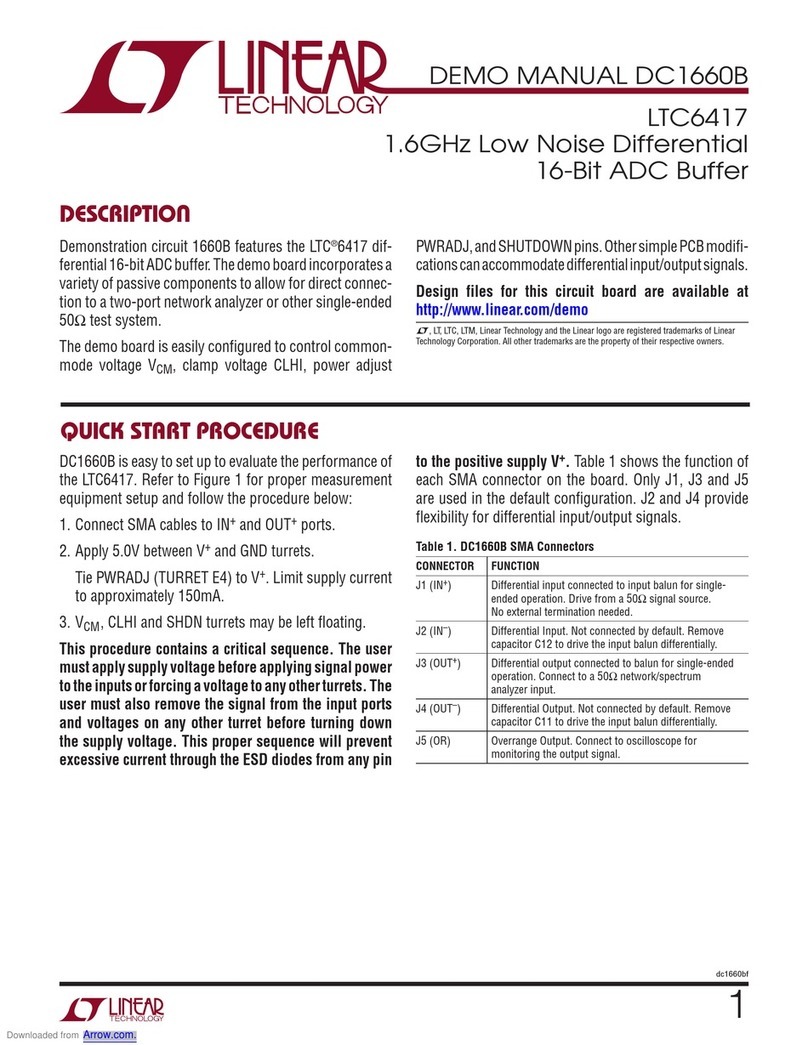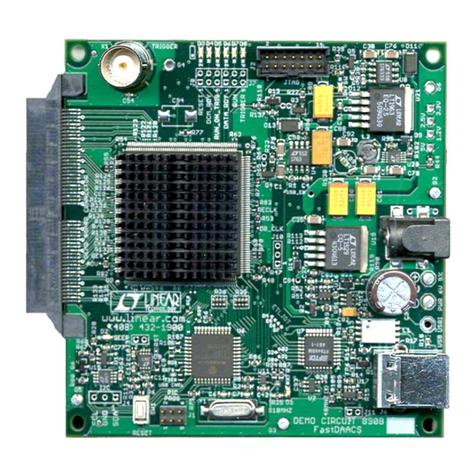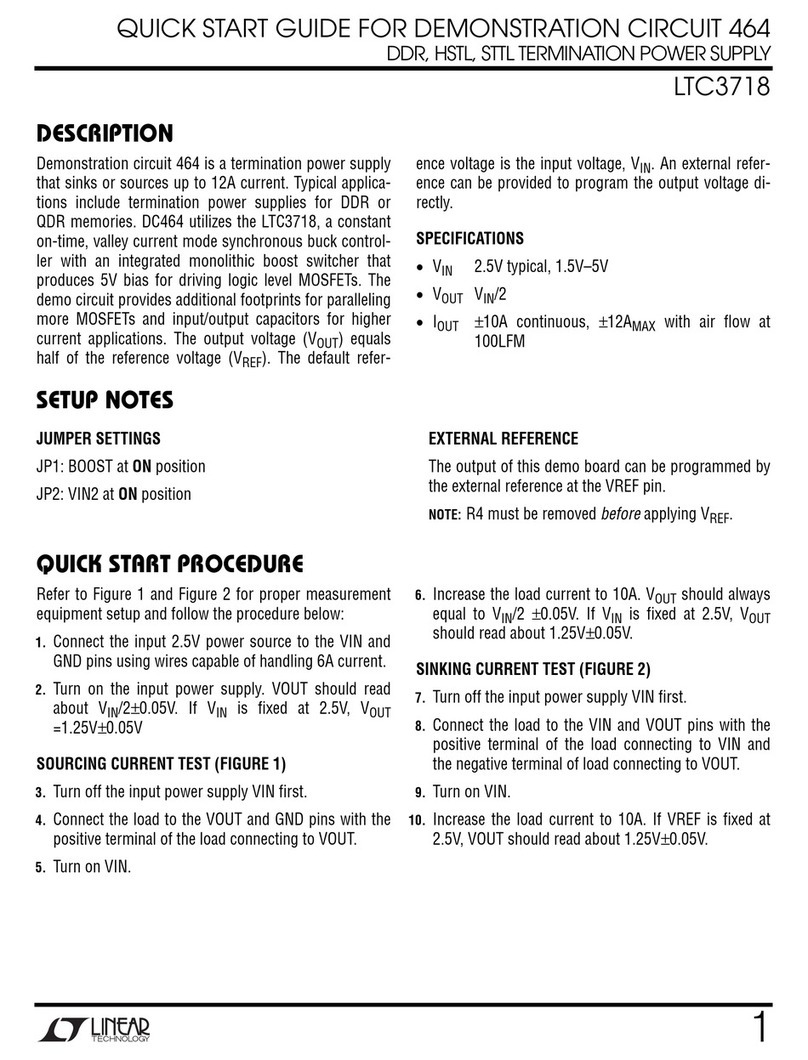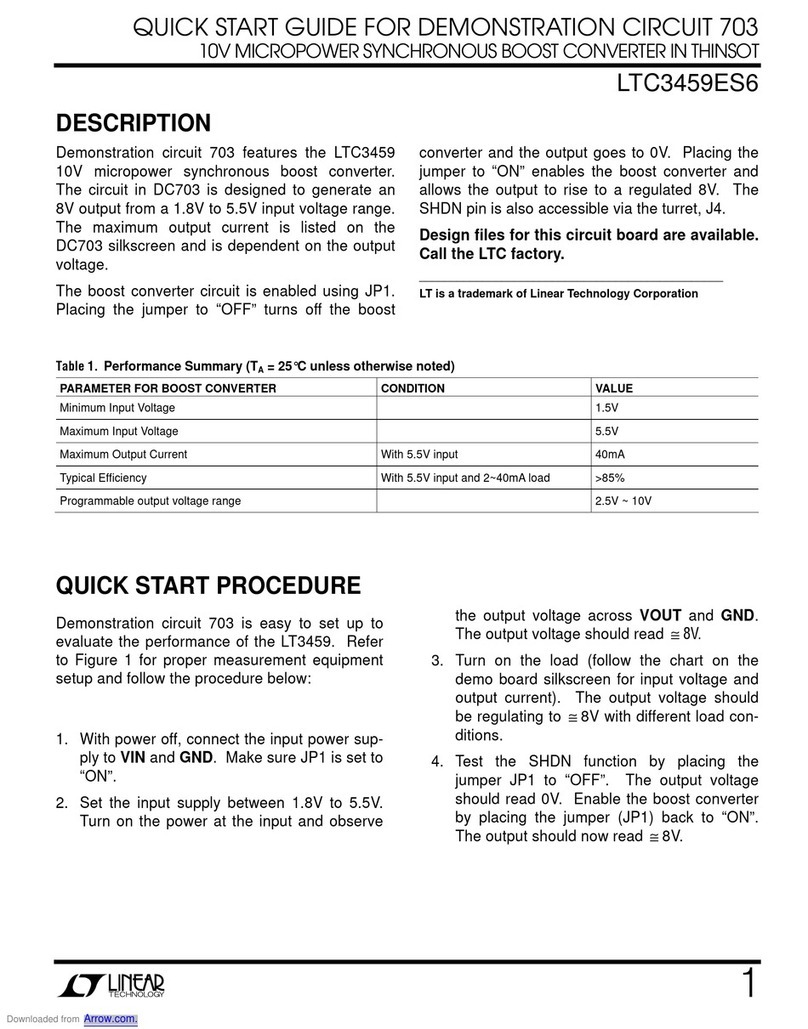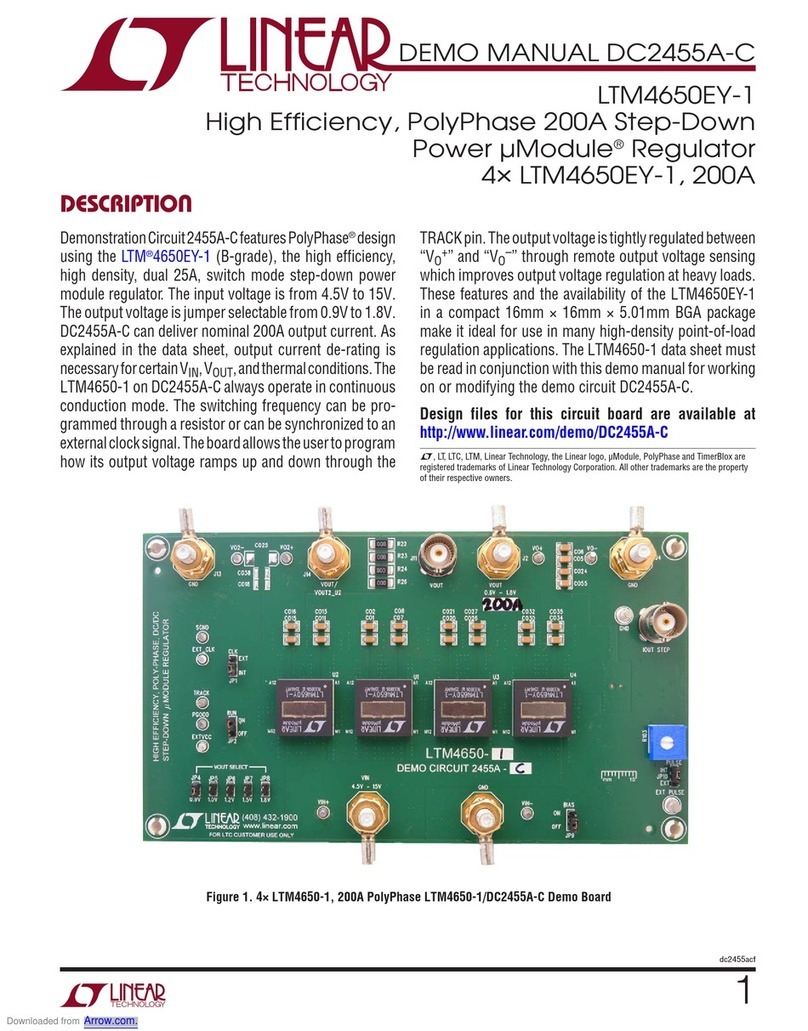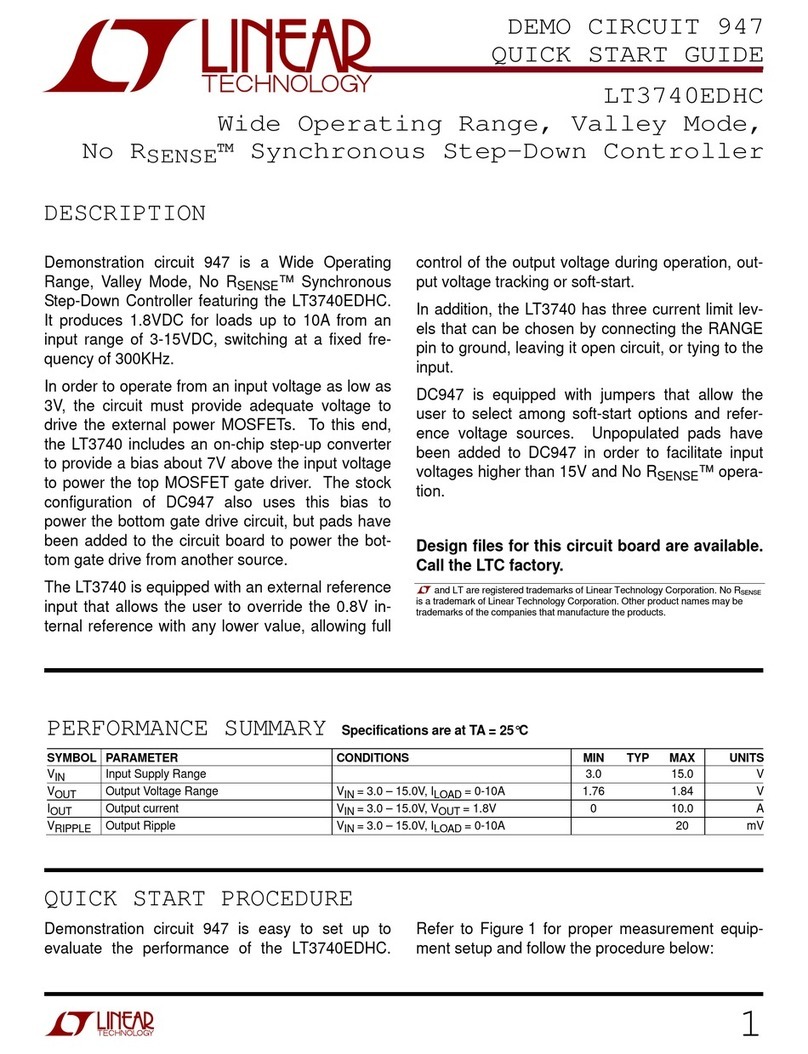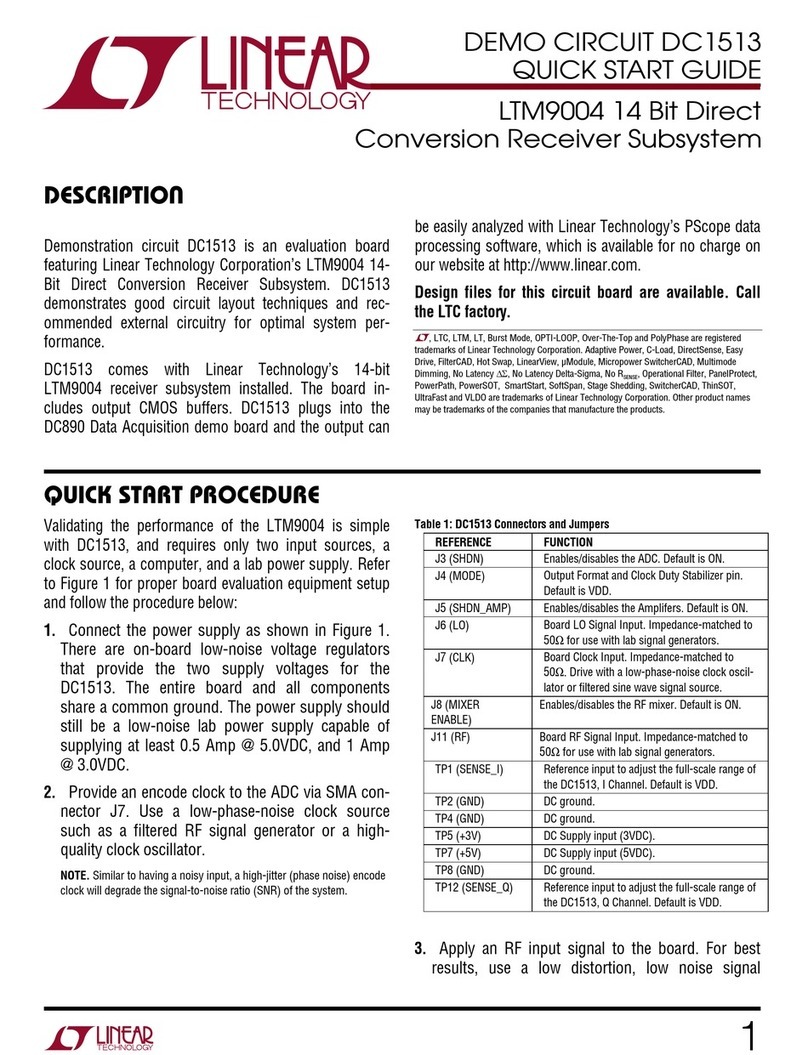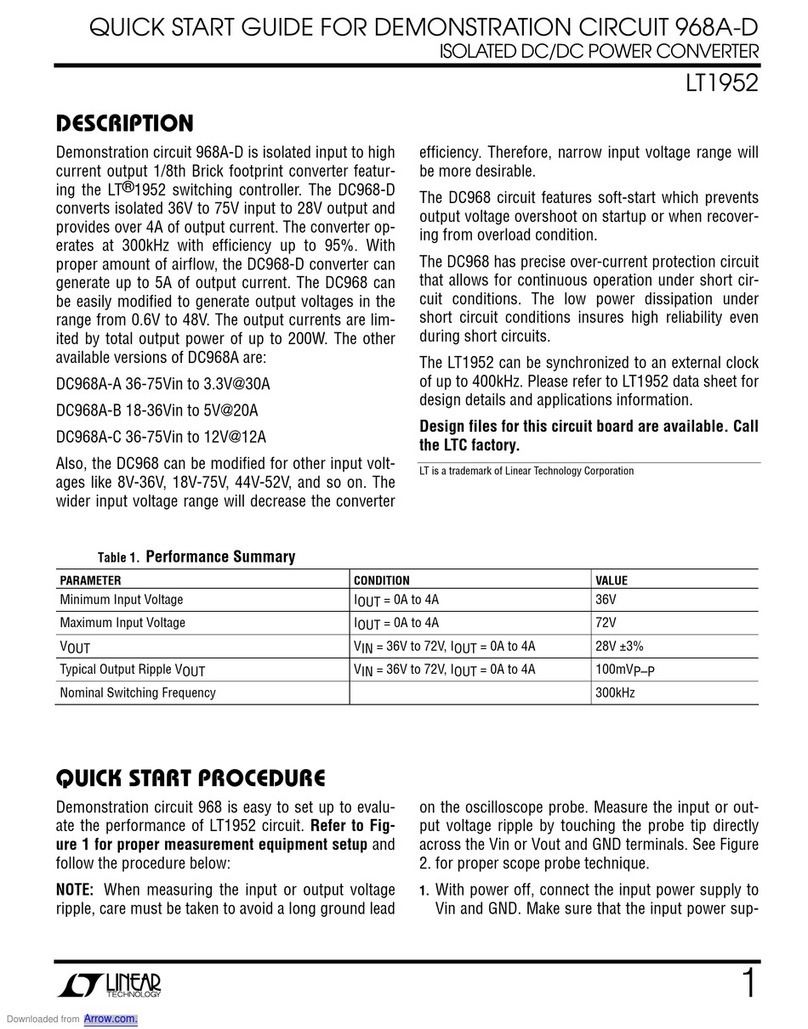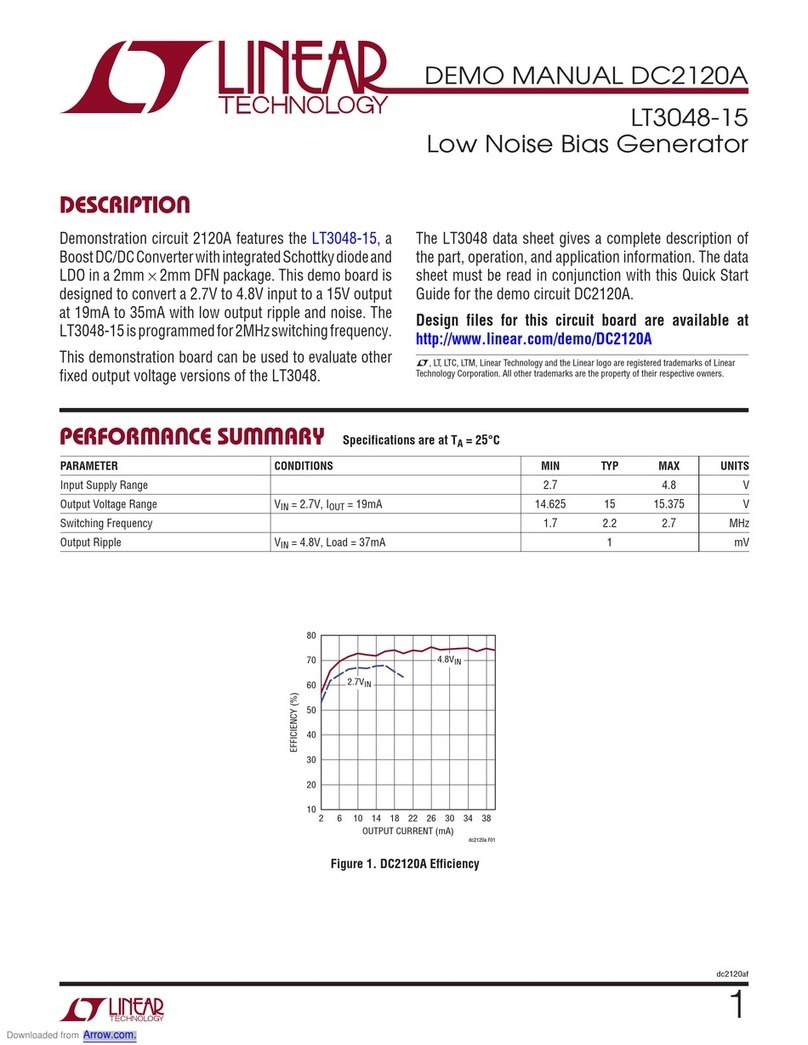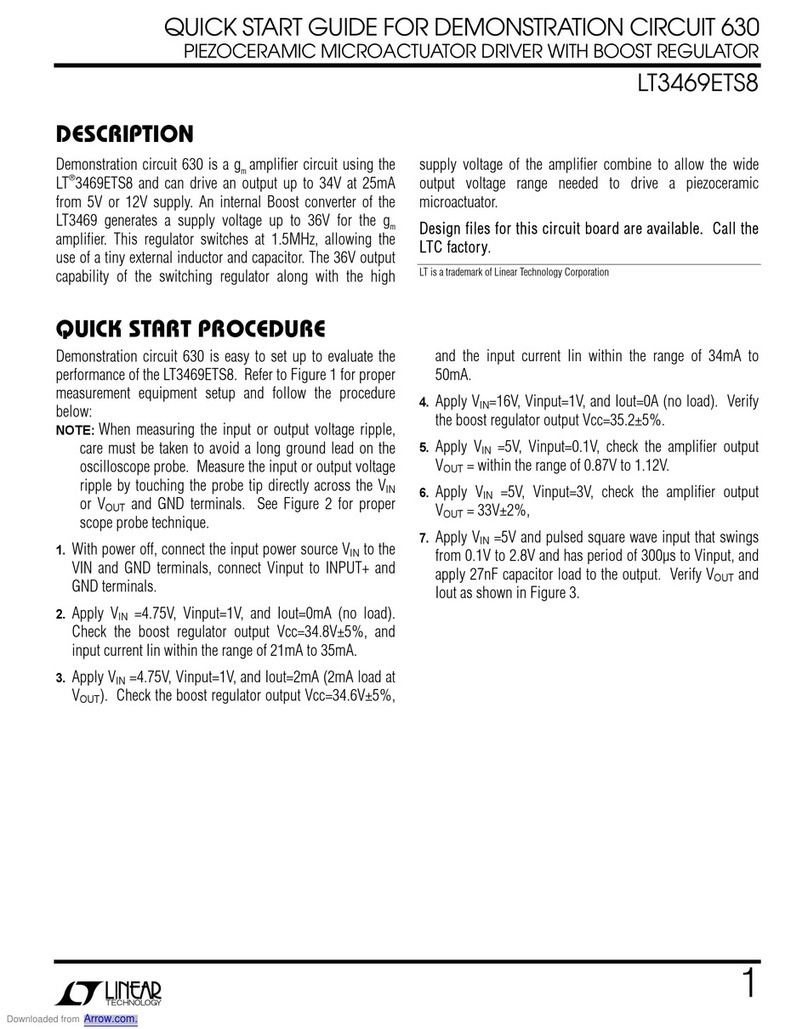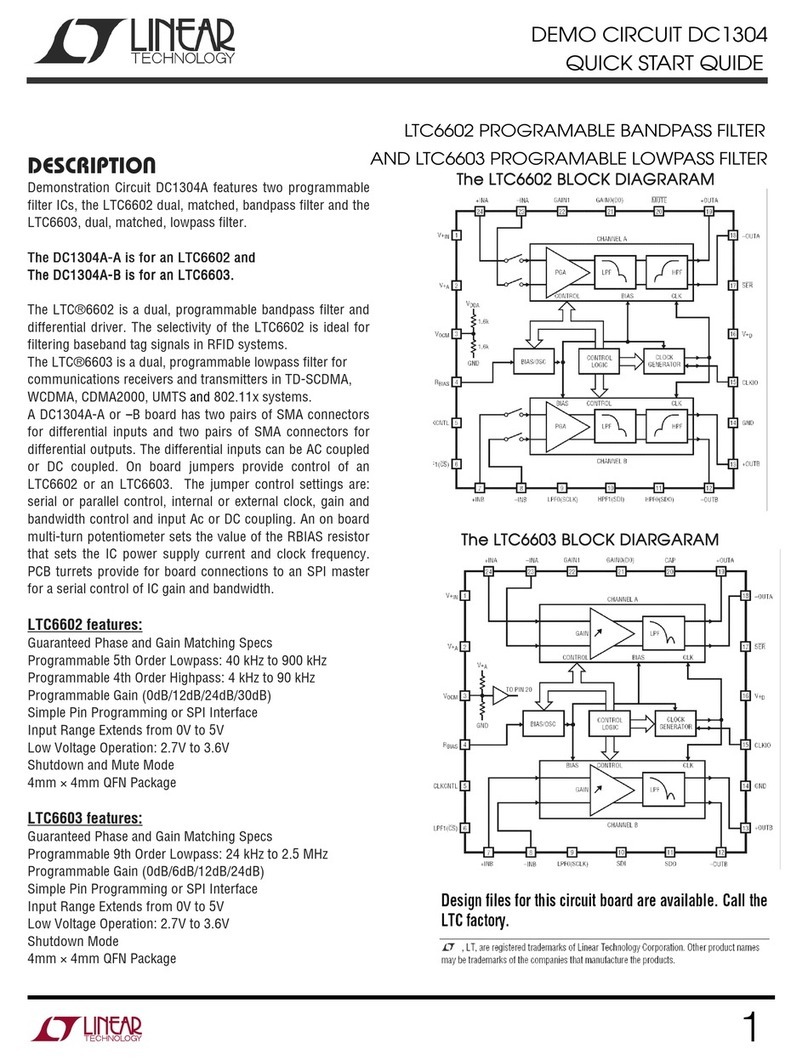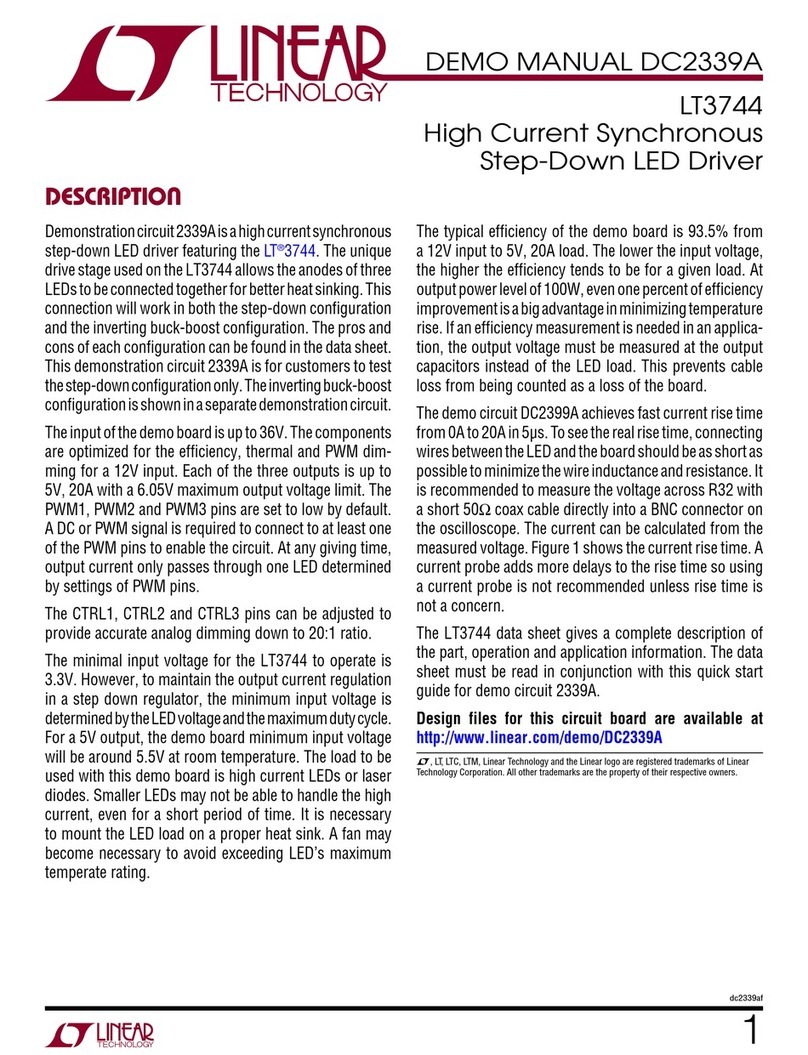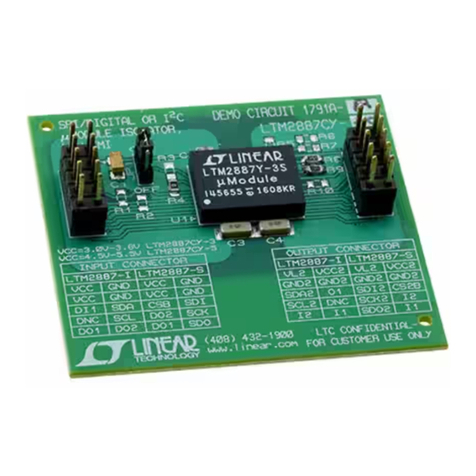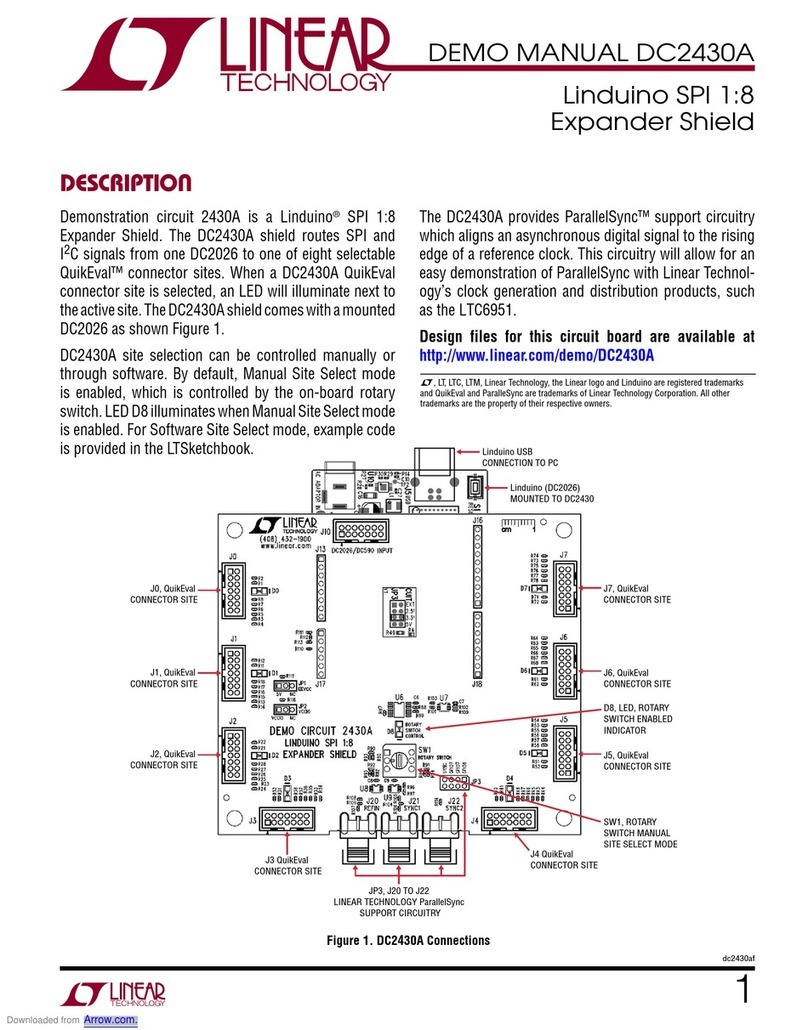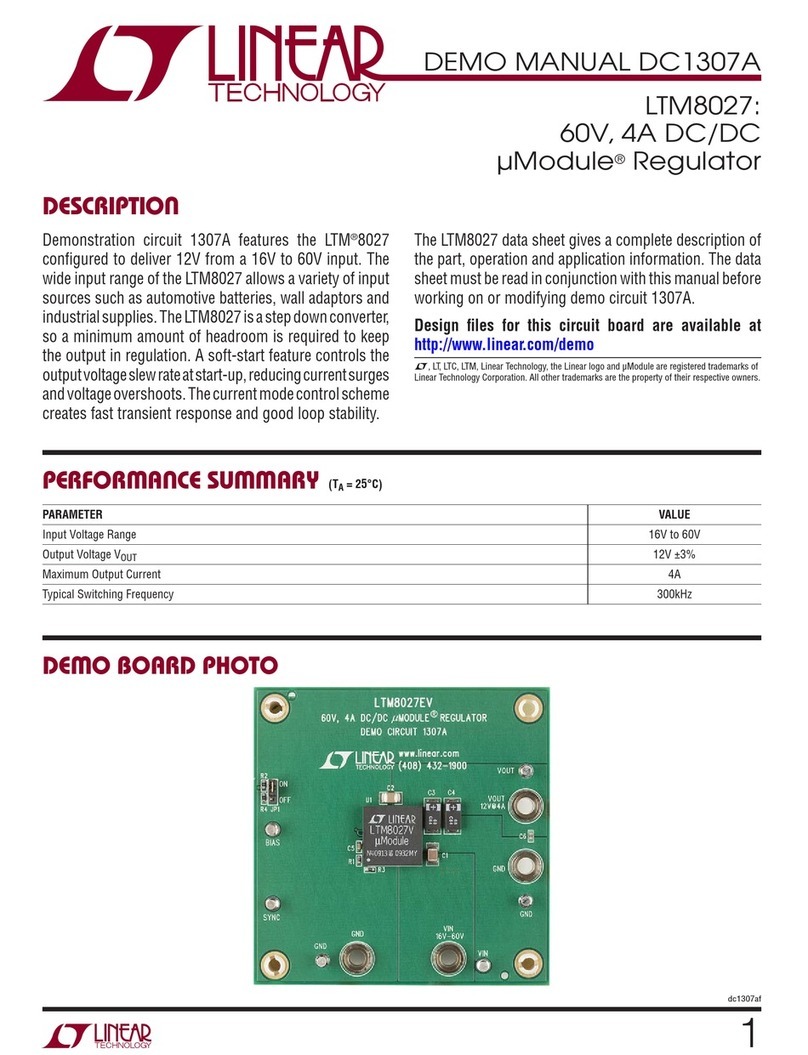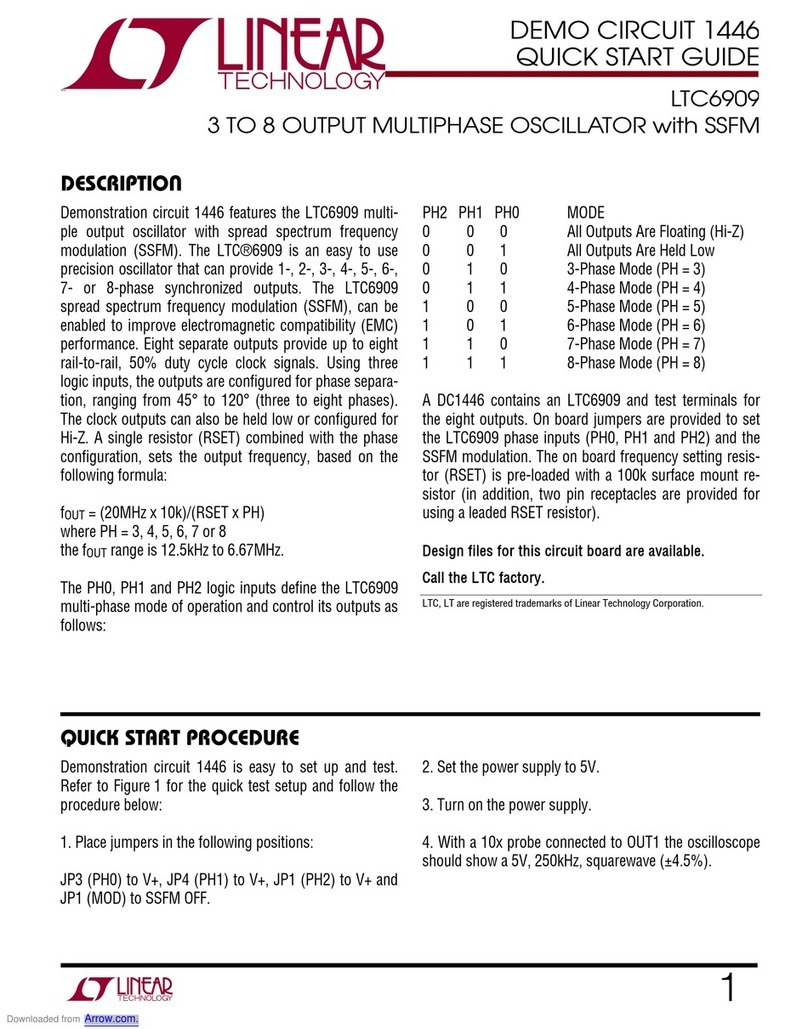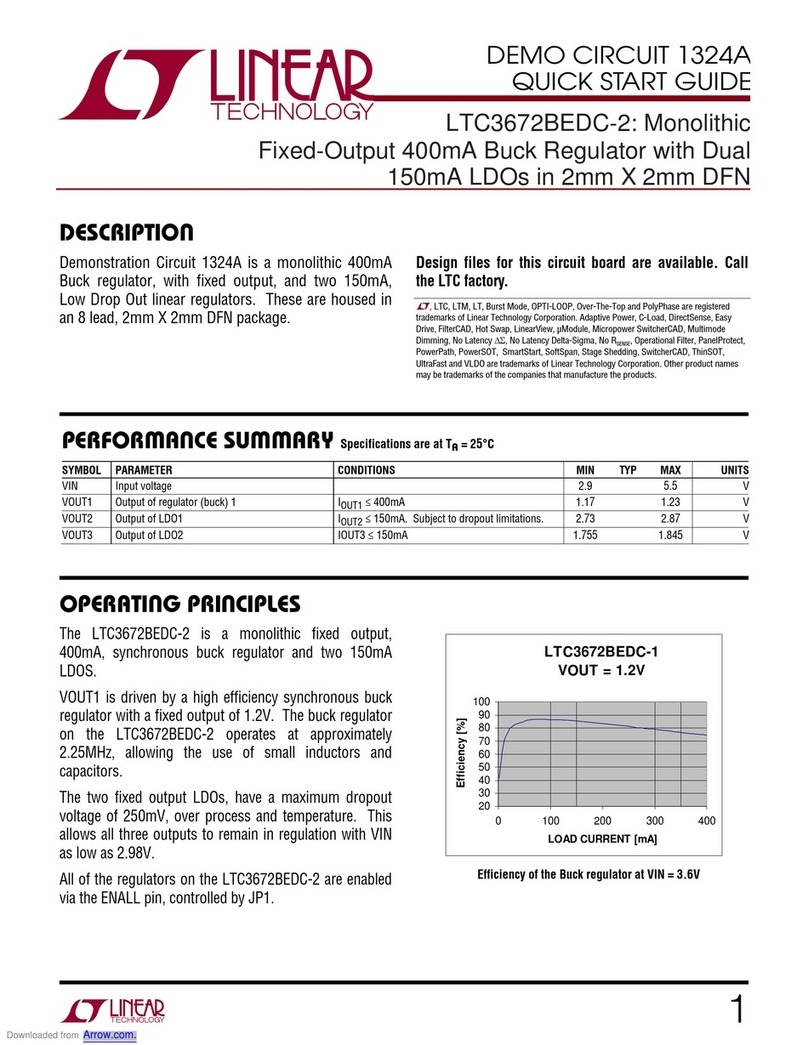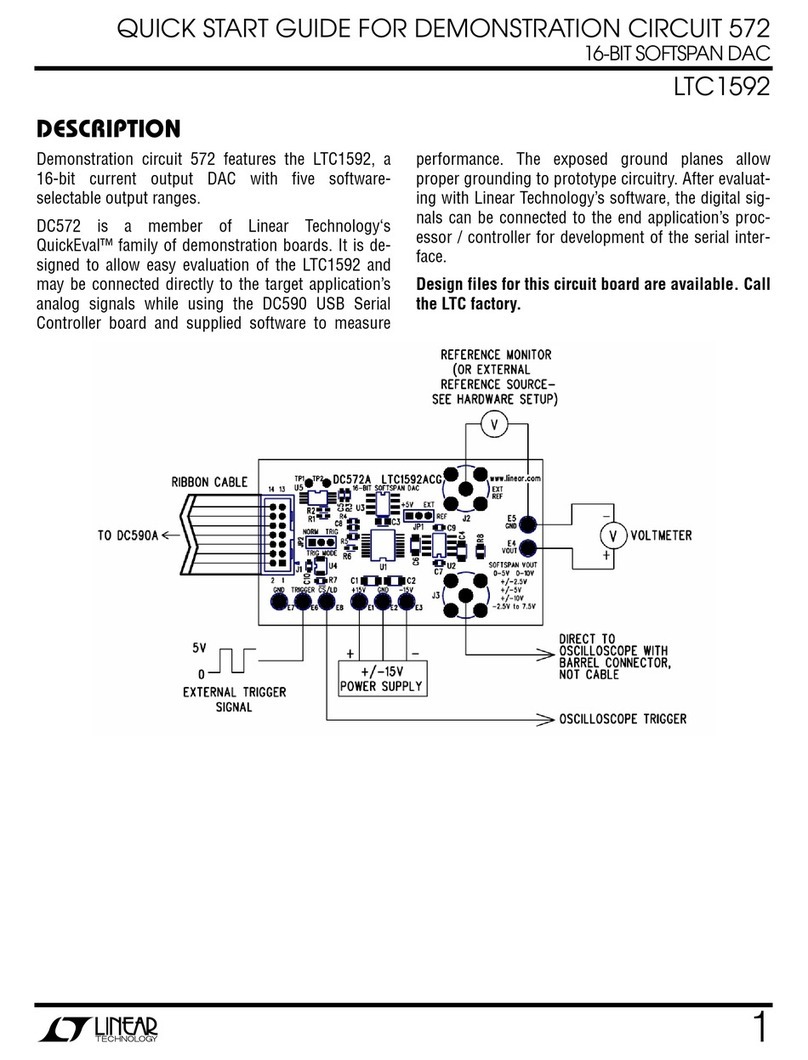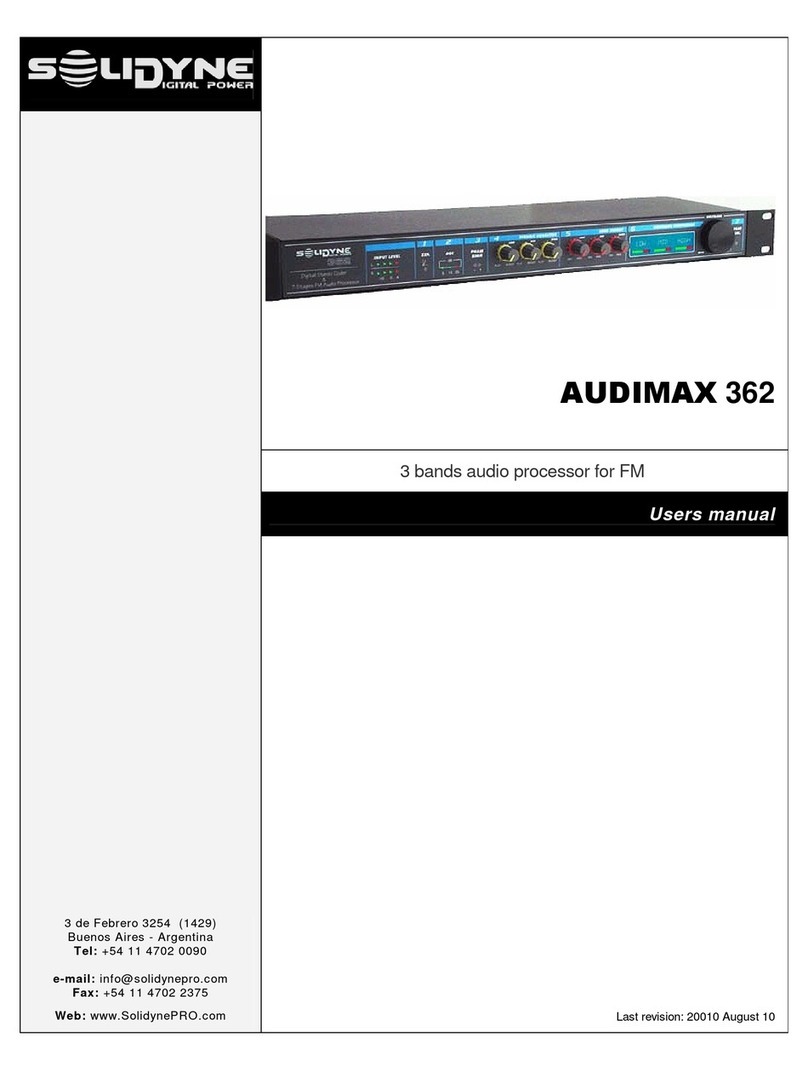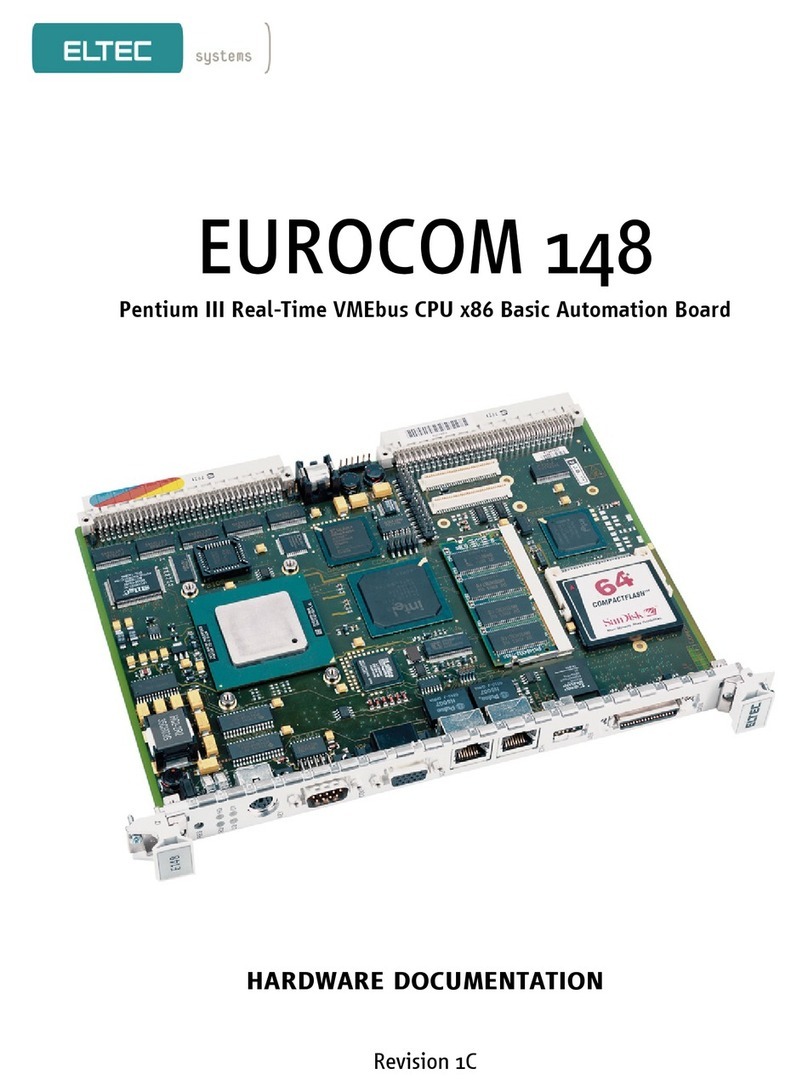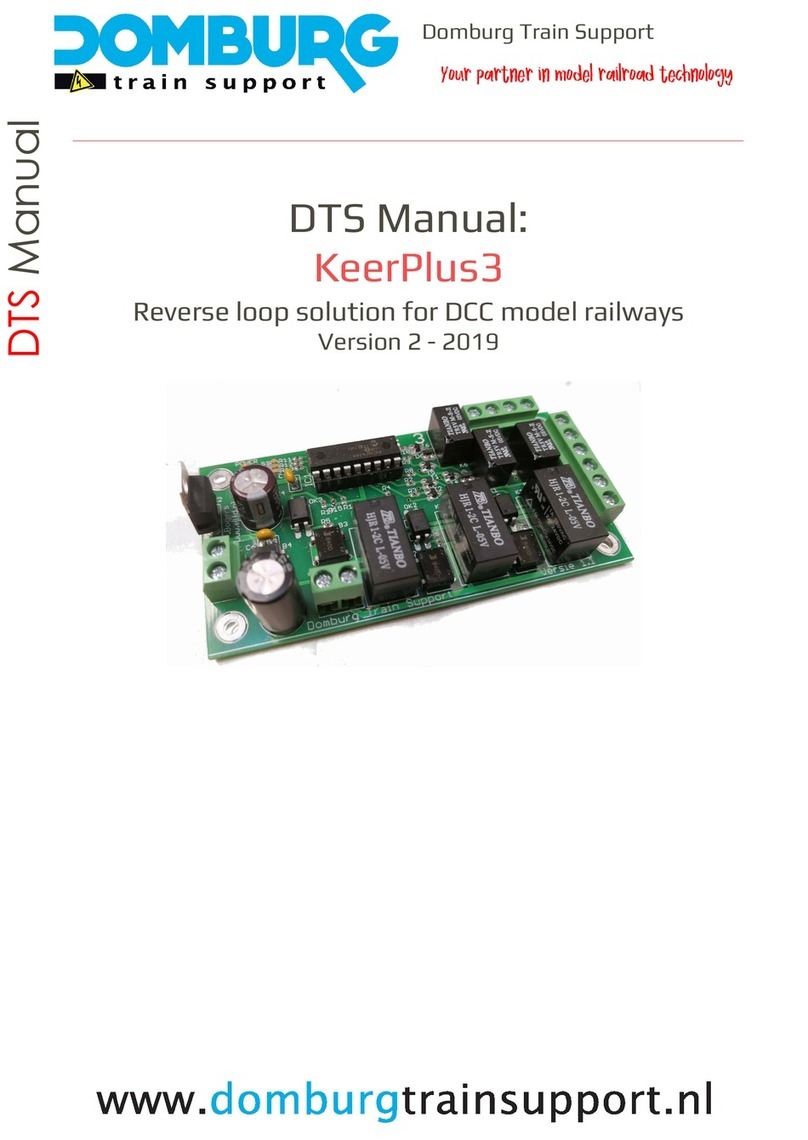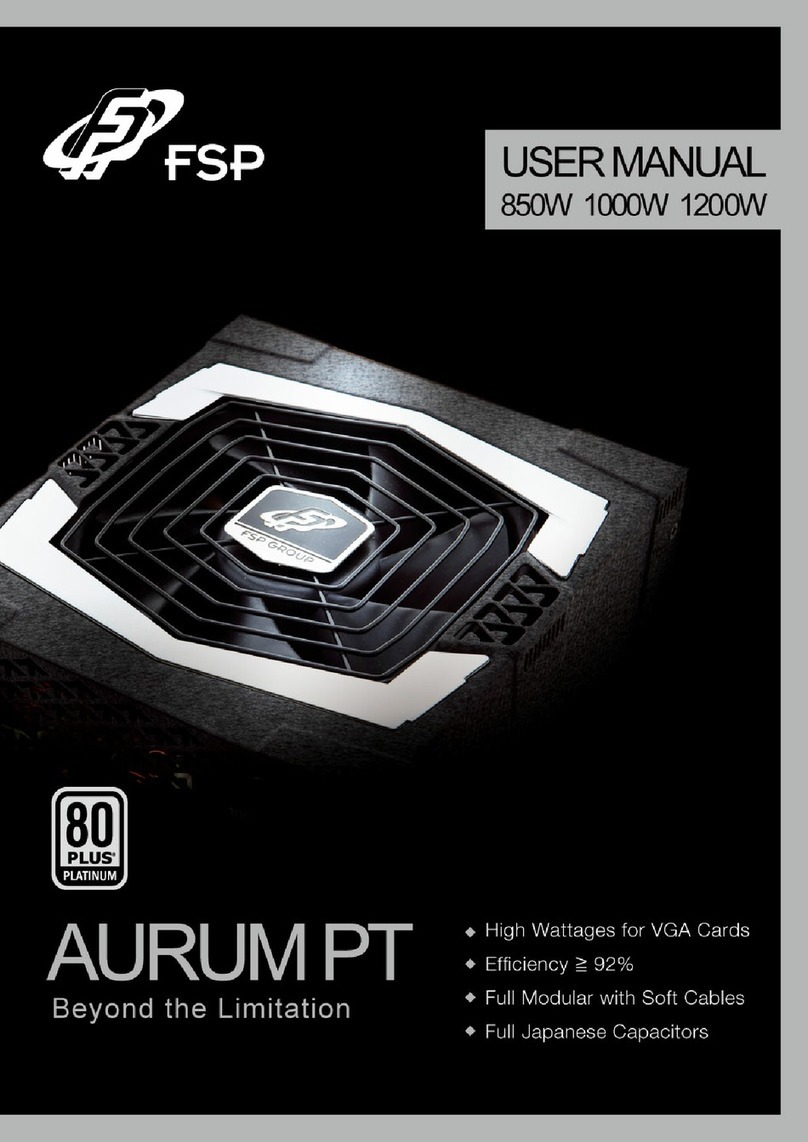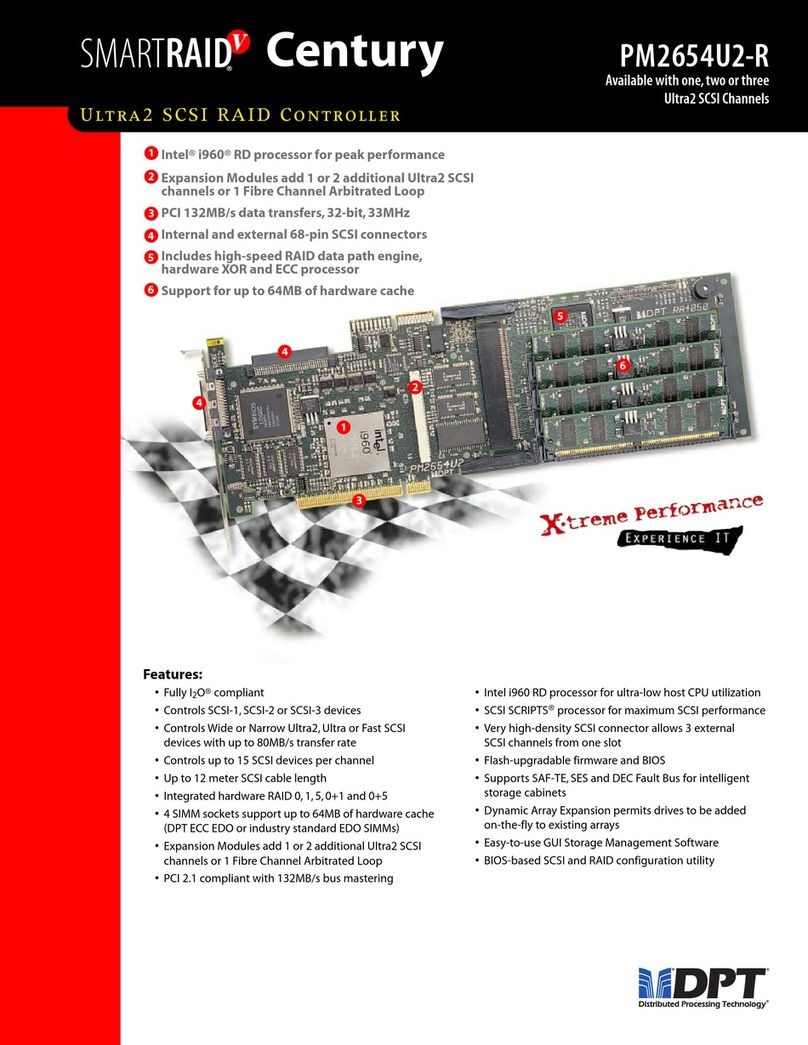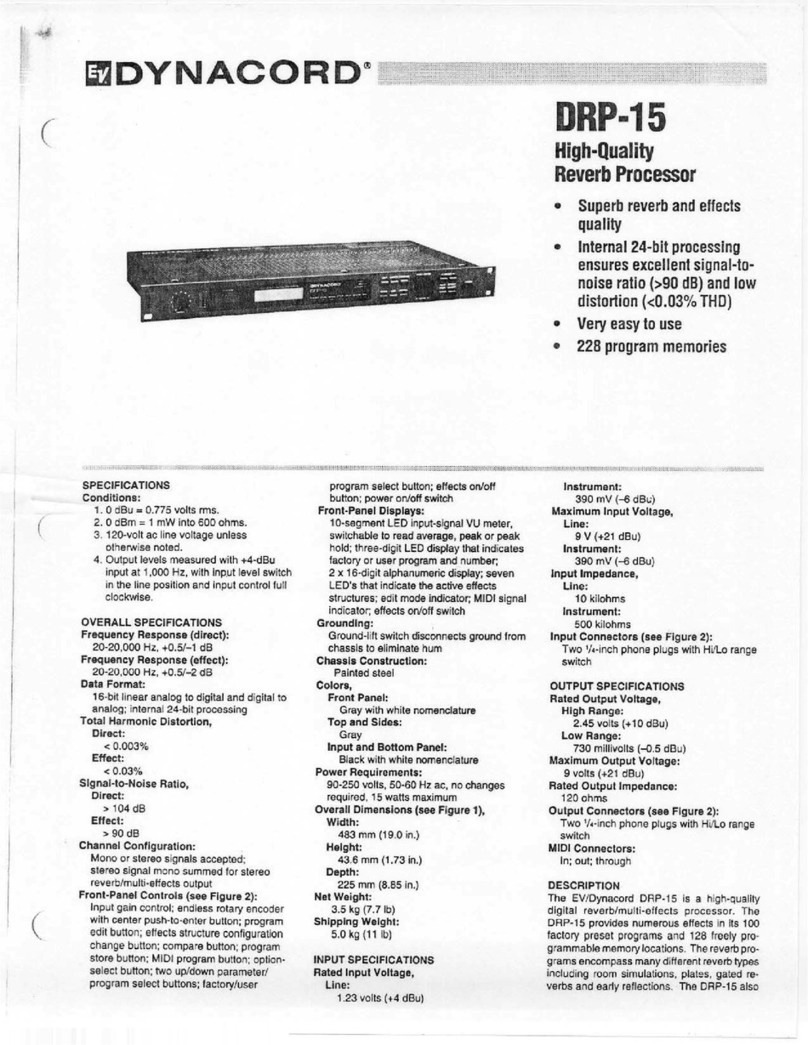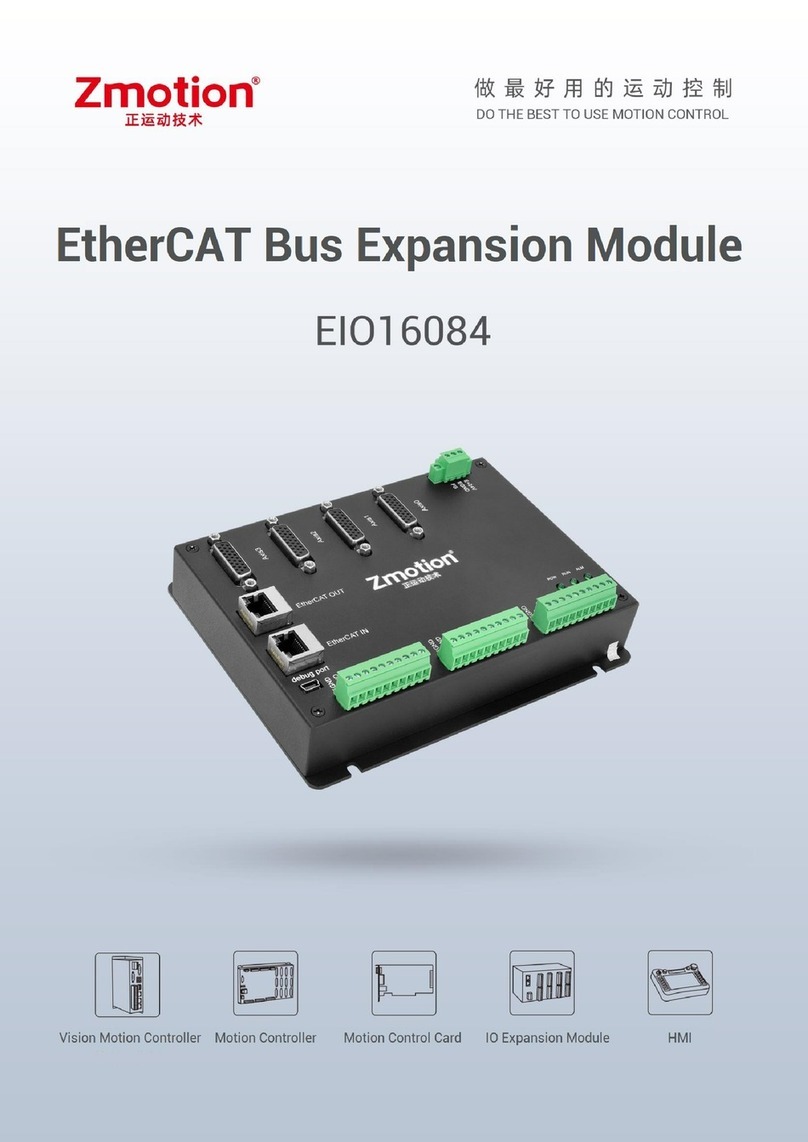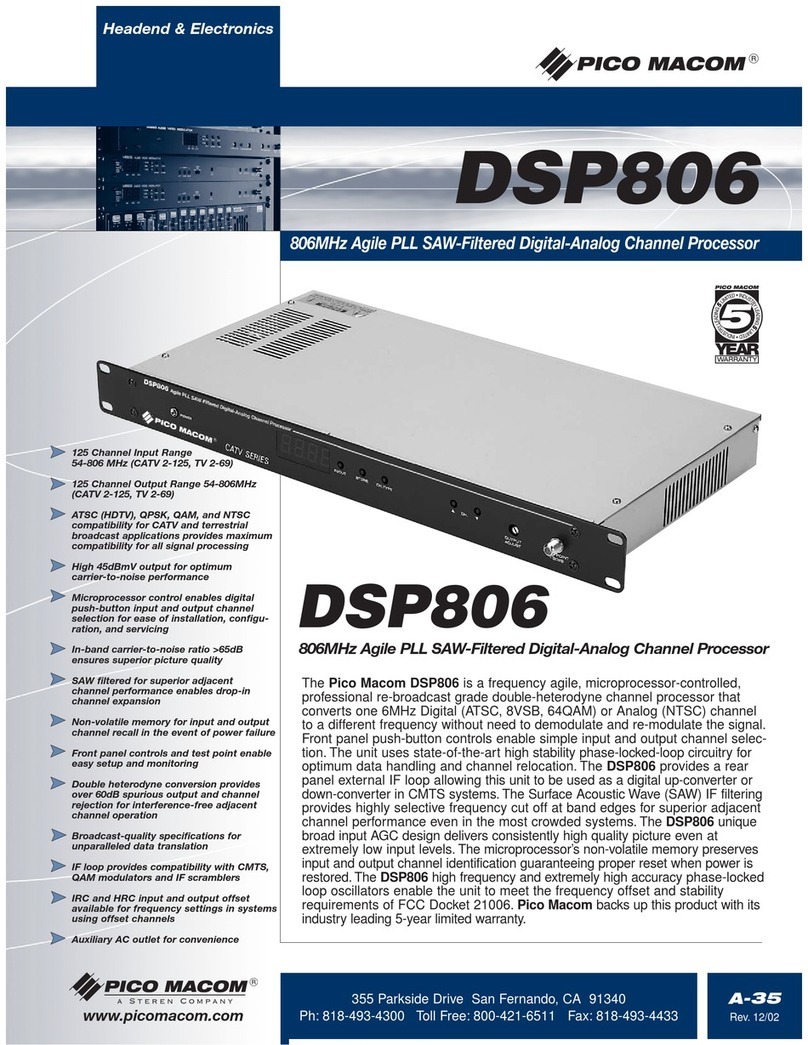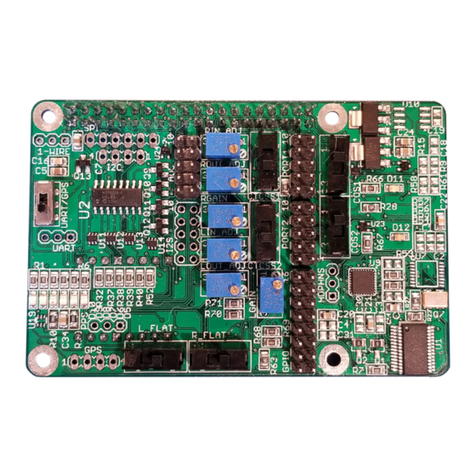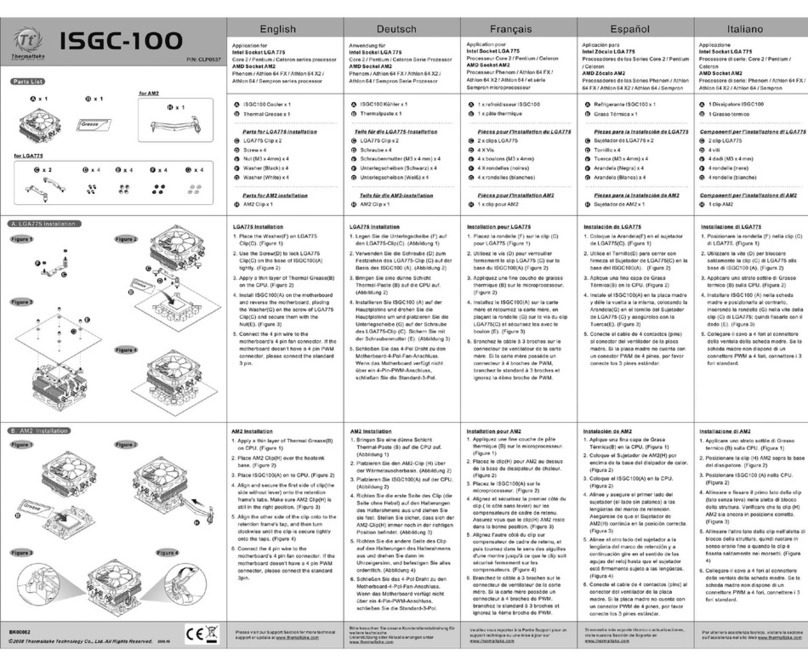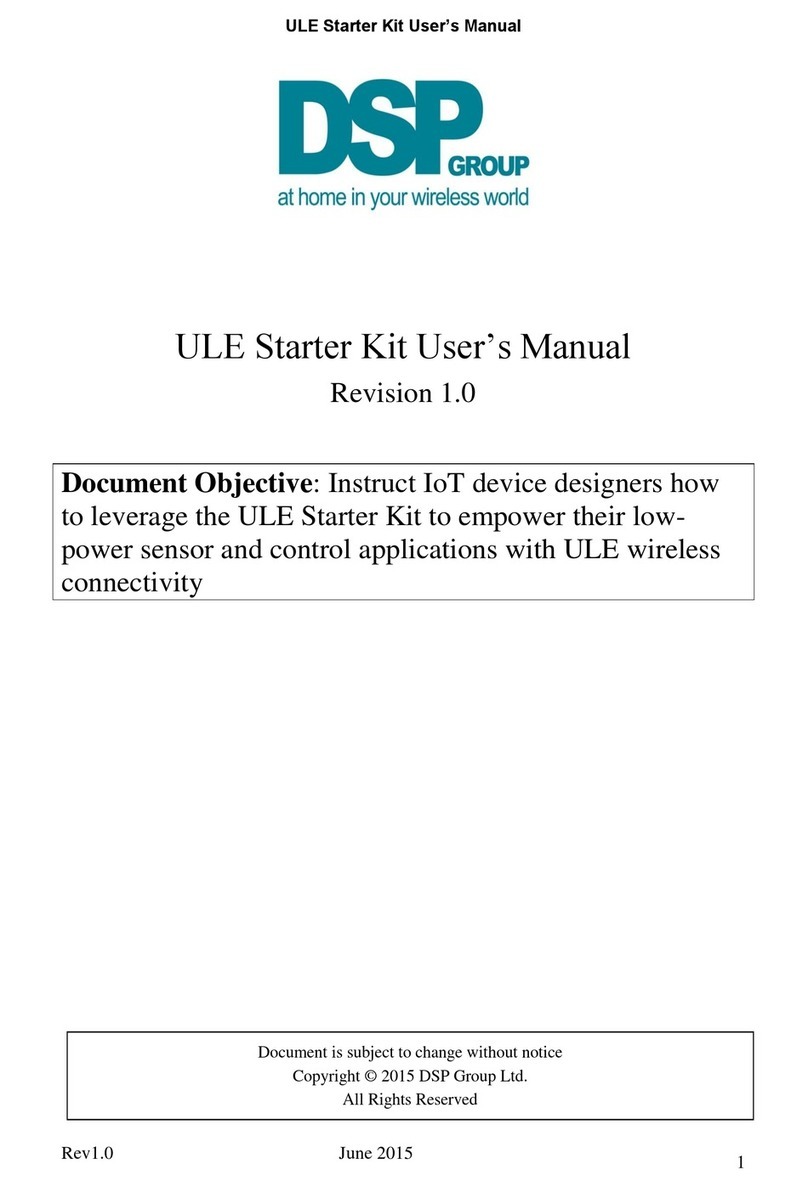
LTC2430/LTC2431
12
24301f
Power-Up Sequence
The LTC2430/LTC2431 automatically enter an internal
reset state when the power supply voltage V
CC
drops
below approximately 2V. This feature guarantees the
integrity of the conversion result and of the serial interface
mode selection. (See the 2-wire I/O sections in the Serial
Interface Timing Modes section.)
When the VCC voltage rises above this critical threshold,
the LTC2430 or LTC2431 creates an internal power-on-
reset (POR) signal with a duration of approximately 1ms.
The POR signal clears all internal registers. Following the
POR signal, the converter starts a normal conversion
cycle and follows the succession of states described
above. The first conversion result following POR is accu-
rate within the specifications of the device if the power
supply voltage is restored within the operating range
(2.7V to 5.5V) before the end of the POR time interval.
Reference Voltage Range
The LTC2430/LTC2431 accept a differential external refer-
ence voltage. The absolute/common mode voltage speci-
fication for the REF
+
and REF
–
pins covers the entire range
from GND to V
CC
. For correct converter operation, the
REF
+
pin must always be more positive than the REF
–
pin.
The LTC2430/LTC2431 can accept a differential reference
voltage from 0.1V to V
CC
. The converter (LTC2430 or
LTC2431) output noise is determined by the thermal noise
of the front-end circuits, and, as such, its value in micro-
volts is nearly constant with reference voltage. A decrease
in reference voltage will not significantly improve the
converter’s effective resolution. On the other hand, a re-
duced reference voltage will improve the converter’s over-
all INL performance. A reduced reference voltage will also
improve the converter performance when operated with
an external conversion clock (external F
O
signal) at sub-
stantially higher output data rates.
Input Voltage Range
The analog input is truly differential with an absolute/com-
mon mode range for the IN
+
and IN
–
input pins extending
from GND – 0.3V to V
CC
+ 0.3V. Outside these limits, the
ESD protection devices begin to turn on and the errors due
to input leakage current increase rapidly. Within these lim-
its, the LTC2430 or LTC2431 converts the bipolar differen-
tial input signal, V
IN
= IN
+
– IN
–
, from –FS = –0.5 • V
REF
to +FS = 0.5 • V
REF
where V
REF
= REF
+
– REF
–
. Outside this
range the converter indicates the overrange or the
underrange condition using distinct output codes.
Input signals applied to IN
+
and IN
–
pins may extend by
300mV below ground and above V
CC
. In order to limit any
fault current, resistors of up to 5k may be added in series
withthe IN
+
and IN
–
pins withoutaffecting the performance
of the device. In the physical layout, it is important to main-
tain the parasitic capacitance of the connection between
these series resistors and the corresponding pins as low
as possible; therefore, the resistors should be located as
close as practical to the pins. In addition, series resistors
will introduce a temperature dependent offset error due to
the input leakage current. A 1nA input leakage current will
develop a 1ppm offset error on a 5k resistor if V
REF
= 5V.
This error has a very strong temperature dependency.
Output Data Format
The LTC2430/LTC2431 serial output data stream is 24 bits
long. The first 3 bits represent status information indicat-
ing the sign and conversion state. The next 21 bits are the
conversion result, MSB first. The third and fourth bits to-
gether are also used to indicate an underrange condition
(thedifferential input voltage is below–FS) or anoverrange
condition (the differential input voltage is above +FS).
Bit 23 (first output bit) is the end of conversion (EOC)
indicator. This bit is available at the SDO pin during the
conversion and sleep states whenever the CS pin is LOW.
This bit is HIGH during the conversion and goes LOW
when the conversion is complete.
Bit 22 (second output bit) is a dummy bit (DMY) and is
always LOW.
Bit 21 (third output bit) is the conversion result sign indi-
cator (SIG). If V
IN
is >0, this bit is HIGH. If V
IN
is <0, this
bit is LOW.
Bit 20 (fourth output bit) is the most significant bit (MSB)
of the result. This bit in conjunction with Bit 21 also
provides the underrange or overrange indication. If both
Bit 21 and Bit 20 are HIGH, the differential input voltage is
APPLICATIO S I FOR ATIO
WUUU




















